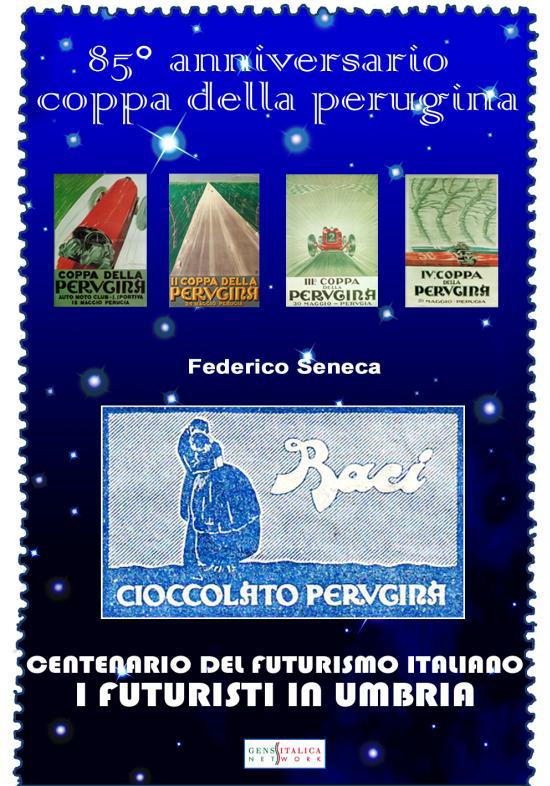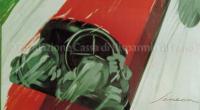Futurist Seneca: from Baci to Perugina Cup

During the Twenties of the last century, Filippo Tommaso Marinetti visited the Perugina factory; soon he was interested in the productive processes, paying a particular attention to what was more congenial to him: the artistic expression related to the product, the company, and the advertisements. So at the end of the tour he wrote on the guest-book: “Well done, Seneca, you’re an excellent futurist of the advertisement!”
With this short sentence, Marinetti identified Federico Seneca as a Futurist artist, and sensed the importance of the modern communication in the development of business and civil society; he also included in the Futurist movement other kinds of artistic expression, like the unprecedented creativity of Seneca in his work for Perugina.
 Seneca’s more intense futurist expression is represented by the posters designed in occasion of the four editions of Perugina Cup. All the pictures tell about the “speed” through the images, following a track that, unfortunately, breaks too early for the premature end of the car race.
Seneca’s more intense futurist expression is represented by the posters designed in occasion of the four editions of Perugina Cup. All the pictures tell about the “speed” through the images, following a track that, unfortunately, breaks too early for the premature end of the car race.
In fact, the first poster expresses “the speed” through the classical elements of the time: the car, the driver and the road. The second poster is concentrated on the driver’s visual and emotional feelings “in the speed”. The third, dated 1926, is dedicated to the Italian car that the previous year, in September, won the first Formula One World Champion. The forth exalts the challenge to a “high speed” between two racing drivers. The fifth, unfortunately, never came to life.
We have a further evidence of Seneca’s high sensibility as a communicator: all the posters lack the year. Was it an all-political oversight?
 The picture of “Baci Perugina” represents Seneca’s highest expression as an artist and a communicator; it tells a love story under the stars, where constellations materialize everywhere: opening the box of chocolates, in the negative picture inside the Baci silver wrapping. Later on, the starry sky on the blue background became the prevailing element in the visual communication of Baci, reaching its maximum in the special livery of the Alitalia Jumbo that connected Rome to New York.
The picture of “Baci Perugina” represents Seneca’s highest expression as an artist and a communicator; it tells a love story under the stars, where constellations materialize everywhere: opening the box of chocolates, in the negative picture inside the Baci silver wrapping. Later on, the starry sky on the blue background became the prevailing element in the visual communication of Baci, reaching its maximum in the special livery of the Alitalia Jumbo that connected Rome to New York.
Federico Seneca is one of the few authors of advertising communication that signed a product, Baci Perugina, that kept unchanged its Futurist image, created in the Twenties. Now Baci are going to celebrate the centenary of their introduction on the market. A record reserved to one of the most appreciated and famous symbols of Italy, a myth created in 1922 by Luisa Spagnoli, named by Giovanni Buitoni and illustrated by Federico Seneca.
As an Umbrian, I wonder how much Seneca’s life in Perugia and his friendship with Gerardo Dottori, an undisputed Umbrian genius of the Futurism, influenced the cultural training of this big artist native of the Marches.
1925 Perugina Cup new pictures 
Back to Projects

